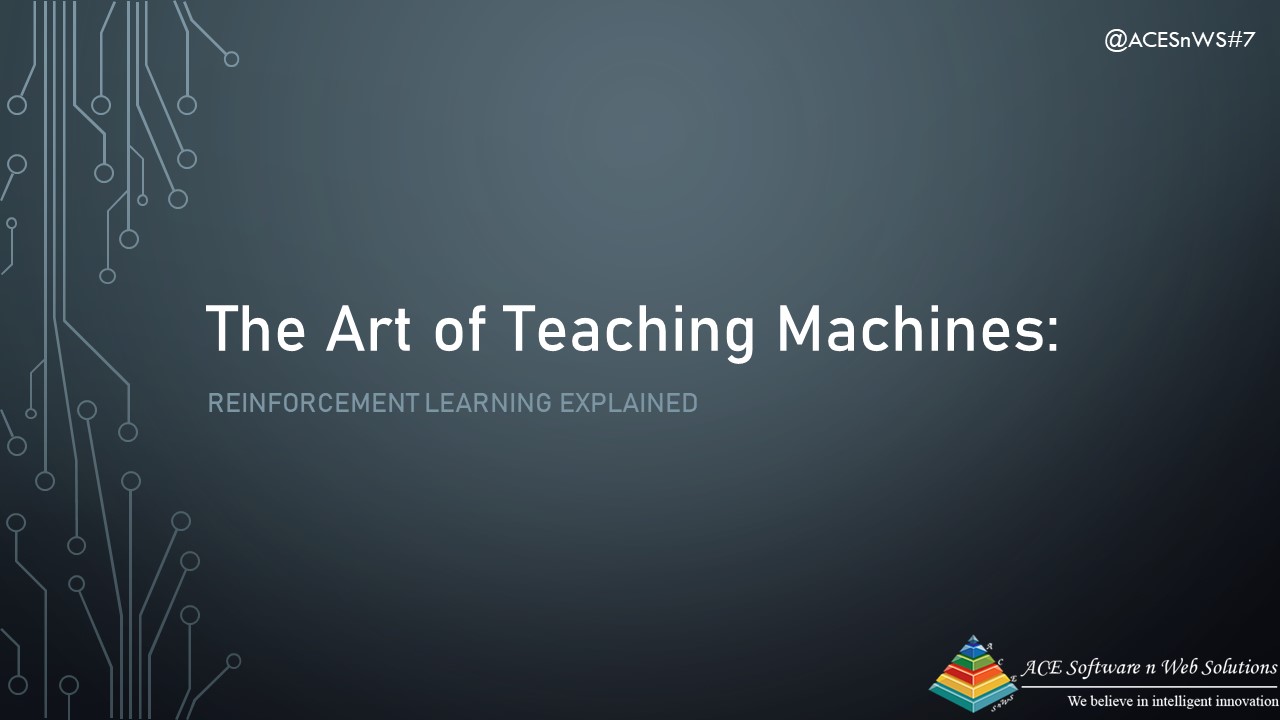
The Art of Teaching Machines: Reinforcement Learning Explained
Reinforcement Learning
Reinforcement Learning (RL) is at the forefront of artificial intelligence, driving innovations in gaming, robotics, and beyond. It’s the science of training machines to make sequences of decisions, and it’s an integral part of the machine learning landscape. In this blog, we’ll explore the fascinating world of reinforcement learning and how it empowers machines to learn and make decisions just like humans.
Understanding Reinforcement Learning
The Basics of Reinforcement Learning
Reinforcement Learning is a subset of machine learning where an agent interacts with an environment, learning how to take actions that maximize a reward. It’s akin to teaching a dog new tricks. The dog (agent) performs actions, receives treats (rewards or penalties) based on its actions, and learns to take better actions to get more treats.
Key Components of Reinforcement Learning
- Agent: The learner or decision-maker that interacts with the environment.
- Environment: The external system that the agent interacts with.
- State: A representation of the environment at a particular time.
- Action: Choices made by the agent to influence the environment.
- Reward: Immediate feedback from the environment, indicating the goodness or badness of an action.
- Policy: The strategy or rule that the agent follows to make decisions.
How Reinforcement Learning Works
- Initialization: The agent begins by taking an action in an initial state of the environment.
- Action and State: The agent takes an action and transitions to a new state in the environment.
- Reward: The environment provides a reward based on the action taken, which the agent uses to evaluate the action’s quality.
- Learning: The agent uses the rewards to learn from its past experiences and adjusts its policy to improve future decisions.
- Repeat: This cycle repeats, and the agent continually refines its policy based on trial and error.
Applications of Reinforcement Learning
Reinforcement Learning has a wide array of real-world applications:
- Game Playing: RL-powered algorithms have achieved superhuman performance in games like Chess, Go, and Dota 2.
- Robotics: RL is used to train robots to perform complex tasks, such as walking, grasping objects, and flying drones.
- Autonomous Vehicles: Self-driving cars use RL to navigate traffic and make safe decisions.
- Healthcare: RL assists in personalized treatment planning and drug discovery.
- Finance: RL is used for algorithmic trading and portfolio management.
Challenges in Reinforcement Learning
The Exploration-Exploitation Dilemma
One of the main challenges in RL is striking the right balance between exploration and exploitation. Agents need to explore new actions to discover better strategies, but they also need to exploit known strategies to maximize rewards.
Credit Assignment
In complex environments, determining which action led to a particular outcome (good or bad) can be challenging. Properly assigning credit is crucial for effective learning.
Reinforcement Learning Algorithms
There are various algorithms used in RL, including:
- Q-Learning: A model-free, value-based algorithm that learns the quality of actions in a given state.
- Policy Gradients: Model-free methods that optimize the agent’s policy directly.
- Deep Q-Networks (DQN): Combines RL with deep neural networks to handle high-dimensional input spaces.
The Future of Reinforcement Learning
The future of RL is bright and holds many possibilities. As RL algorithms become more sophisticated, they will play a pivotal role in shaping AI-powered systems, from autonomous vehicles and robotics to healthcare and personalized learning.
Conclusion
Reinforcement Learning is a fascinating branch of AI that simulates how humans learn through trial and error. By allowing machines to interact with their environment and adapt their behavior based on rewards and penalties, RL opens the door to a world of intelligent, decision-making machines. As RL continues to evolve, it will find applications in an ever-expanding range of fields, driving innovation and transforming the way we live and work.
Stay tuned for more exciting updates on the ever-evolving world of technology and artificial intelligence.




